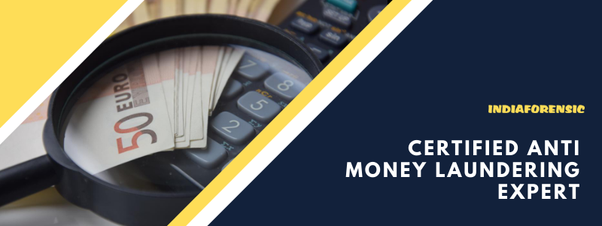Introduction
According to the research published in Indian Express, Corruption costs India Rs 1,555 thousand crores every year. This is a huge sum of money. A large section of the population in India is poor and uneducated which necessitates huge public investments for the provision of basic needs. There is a top–to–down rather than a decentralized approach to decision-making. Most of the rules and regulations are complicated and unclear. So their interpretation is at the discretion of the bureaucrats. These conditions have been responsible for widespread corruption in India.
Different Forms of Corruption
Corruption is spread over in society in several forms. The major ones are: –
-
Bribe: This involves giving money, gifts, or other benefits to someone as a way to influence them to do something illegal or dishonest in favor of the person offering the bribe.
-
Nepotism: It occurs when someone in a position of power or influence shows favoritism to their relatives, providing them with special treatment or opportunities that others may not receive.
-
Misappropriation: This happens when someone takes money or resources that belong to others and uses them for their own personal gain, without permission or proper justification.
-
Patronage: In this form of corruption, a person in a position of authority or influence provides improper support or encouragement to someone, often misusing their power for personal gain or to benefit someone else unfairly.
Corruption in India
In India corruption exists at a high, middle, and at a petty or lower level. Corruption of systems and institutions formulating and implementing public policy, malpractices during defense purchases, public investments in infrastructure, procurement of food grains for the Public Distribution System, etc. can be cited as examples of corruption at a high level. Malpractices at the execution or implementation levels for public projects or during the delivery of services are examples of middle-level corruption. The petty level of corruption frequently occurs in everyday life. Though the amounts are small, it is exploitative in nature.
Corruption needs immediate attention as it has retarded our development. It has created black and red money which is not available for productive investment. In spite of the liberalization of the economy, corruption comes in the way of Foreign Direct Investment inflows. In short, it has become a threat to the national security of India. The serious consequences of corruption have created the need to fight it from all angles as soon as possible.
Prevention Recommendations
This article deals with some of the genuine recommendations to combat corruption. Corruption in any system or society depends on three factors – firstly, the set of individuals’ sense of values, secondly, the set of social values, and thirdly, a system of governance or administration.
- The first solution is that the citizens should fight corruption more strongly. In the past, the perception was that a citizen will have to bribe a public servant if he wants to get a benefit which was illegal. But today we have reached a stage where even if the legitimate requirements are satisfied, the citizens have to bribe the public servant. According to N. Vittal, Ex-Central Vigilance Commissioner, we should put into practice the advice of the Taitreya Upanishad about how we can resolve our problems by coming together.
- Family attachment is an important cause of corruption. A family person feels that he should earn enough not only for himself and his life but also for his children and grandchildren and perhaps seven generations. So he requires an enormous accumulation of wealth. In this situation, a strong youth movement in the country can help reduce corruption at the family level. Each student should take a vow to begin this exercise courageously within the family. Former President, Dr. Abdul Kalam has shown great confidence in the youth to bring India out of the clutches of corruption by 2020.
- We have evolved in our country’s red tape-ridden elaborate system leading to enormous delays. This probably makes the common man consider paying bribes as ‘speed money. So the system of governance should be changed. Transparency should be a keyword in public offices. Technological development can be the best solution in this respect. Online transactions would reduce the need for citizens to visit public offices and government departments.
- The law enforcement authorities also have a crucial role to play in this context. The only thing, that has to be ensured, is proper, impartial, and unbiased use of various anti-corruption Acts to take strong, deterrent prompt, and timely legal action against the offenders, irrespective of their political connections, and money or muscle power. Fast-track judiciary courts to resolve corruption-related cases may help in reducing the intensity of the problem.
Simplification of Systems
- Simplified forms and procedures reduce the dependence of the users on intermediaries. This will also minimize the Government-citizen interfaces and reduce the potential for corruption.
- A value-based leadership encourages effective governance. Positive values like compassion, helping others, love, truthfulness, etc. help to build and develop society. Mahatma Gandhi and Jamshedji Tata are examples of value-based leaders. India should have such leadership in politics, religion, science, industry, education, administration, and practically in every sphere.
- The implementation of policies like anti-poverty programs should be corruption-free. Only a small fraction of the benefit of these programs accrues to the target population. There should be control checkpoints to find out the scope of corruption. Strict measures should be taken against those enforcing programs only with the intention of making money out of it.
- Good practices of organizations in the corporate sector should be highlighted. Regulatory mechanisms should be strengthened. For example, accounting firms, many times act as consultants of the firm. This leads to a conflict of interest. Perhaps one of the simplest things to do would be to prevent the auditing firm from doing consultancy for the same firms. Scams like Enron can be avoided. An important feature of the Public Sector Enterprises was the vigilance function performed under the overall supervision of the Central Vigilance Commission. It is necessary to refine the role of such authority after post-reforms and disinvestment policy.
- Another effective way of curtailing corruption is introducing a method that will enable political parties to secure electoral funds in a bonafide manner. Additionally, the central government may finance elections through an election fund. This system is being followed in Germany, Norway, Sweden, and some advanced countries in Europe.
- The media has to perform quite an active role in exposing the causes of corruption. It should not just do sting operations but also expose bad practices to the public. The media should make them aware and compel them to avoid such incidences in the future. The strategy of building public opinion against corruption can be effectively implemented through mass media.
Conclusion
The nation can progress only if there is good governance, there can be no good governance unless moral values are inculcated in the people. There is no way out but to change the system if it is not value-based. Corruption is a global phenomenon. Hence aligning corruption-fighting efforts with global best practices should be the first priority.


